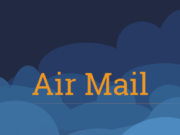
A few times this year, amid news reports of air carrier accidents, inquiries poured into the Royal Aeronautical Society’s International Committee for Aviation Training in Extended Envelopes (ICATEE). Among those inquiries were a number indicating that some training organizations might be on the verge of implementing upset prevention and recovery (UPRT) programs without full benefit of current expertise. Moreover, some operators sounded uncertain about how to recognize commercial programs that unjustifiably deviate from leading experts’ consensus on how to conduct UPRT, Sunjoo Advani, chairman of ICATEE and president of International Development of Technology, told AeroSafety World (ASW) in August.
The overall interest indicates that awareness of this committee’s work since May 2009 in UPRT apparently has permeated the aviation industry. Updates on imminent global adoption of recommendations to mitigate loss of control–in flight (LOC-I) were due to be presented Sept. 25–26 in London by 40 international specialists at the society’s international flight crew training conference.
Six ASW articles in this period of time also have cited related concerns among ICATEE members who contributed to a hard-won consensus, and the following synopsis of frequently asked questions highlights their concerns. (The paraphrased/condensed answers lack detailed source attribution, which can be found in the ASW articles cited, in the interest of simplification.)
Concerning just the human-factors dimension of provider selection, one ICATEE expert said, “UPRT instructors must cautiously build from the familiar to the unfamiliar to effectively bridge knowledge and experience gaps. Extensive experience shows that early focus on awareness of angle-of-attack, load, lift vector, coordination and energy management, combined with real-time feedback on the negative consequences of their mismanagement of those elements, helps trainees to gain trust and confidence in the training platform, the instructor pilot and the building-block design of the course of UPRT training.
“Teaching the fundamental concepts and core skills in a progressive, non-threatening manner enhances the trainee’s situational awareness at a rate that allows knowledge, skills and abilities to be internalized — enhancing long-term retention. When effectively delivered, this initial UPRT indoctrination comprehensively prepares the pilot for type-specific UPRT differences training ideally provided by the airline in the simulator [ASW, 10/11].”
How significant is the risk of negative training in UPRT?
ICATEE members from airlines, civil aviation authorities, aircraft manufacturers, academia and the International Civil Aviation Organization (ICAO) for four years have warned consistently that negative training could have devastating consequences for any operator. Two often-voiced concerns have focused on risks from inconsistent UPRT adoption among civil aviation authorities and from failure of operators to strictly adhere to detailed practices derived from the consensus of international specialists.
How have some UPRT programs deviated from model practices?
One critical concern has been evidence of providers promoting training in a flight simulation training device (FSTD) unsuitable for the task. On-aircraft training, too, can lead to negative training if the difference in behavior and control capabilities of a light aircraft and a transport heavy jet aircraft is not recognized. Another concern is failure to change FSTD modeling to match additional training maneuvers, or to detect that new maneuvers will take the pilot outside the FSTD’s normal training envelope.
What are ICATEE’s concerns about the potential for flawed UPRT?
During its formation, the committee concluded that training mitigations for LOC–I were not as effective as providers had assumed, and were ineffective or incorrect in some cases despite the best intentions (ASW, 6/11). Training then had been focusing on unusual attitudes rather than the full range of upsets, and limitations in capabilities of FSTDs were not being considered adequately.
Now, one often-expressed concern is resistance among operators to changing their practices, and an equal concern is willingness of some to adopt UPRT but with a misguided or an inadequately informed grasp of the broad concepts, the FSTD/aerodynamics aspects or the effects of outdated training techniques on pilots. ICATEE has stated that safety is enhanced when training is integrated through proper academics, aircraft-based training and simulator-based training — and that the key element to that process is the qualified instructor.
What are key characteristics of the best UPRT programs?
A few examples are detailed specification of the training objective of each proposed Level D (full-motion) FSTD maneuver, the appropriate method to provide corresponding training and a quality-controlled delivery process. Other attributes are scenario-based, crew-oriented training — adding unexpected conditions, a realistic startle factor — rather than exclusively maneuver-based training. Training providers also will have rectified errors of the past, especially the discredited stall recovery technique that begins with selecting full power and prioritizes minimum loss of altitude rather than immediately reducing angle-of-attack.
The g-awareness (of aircraft state in relation to standard acceleration of gravity) and accurate recovery techniques of mainstream UPRT will not cause in-flight structural breakup of a large commercial jet. G-cueing, motion-cueing, aerodynamic model limits, comprehensive feedback to FSTD instructors and pilot debriefing elements also are factored into such programs. Instructor/operator stations (IOSs) increasingly include displays of g-loading, angle-of-attack and the validated aerodynamic envelope for the airplane type.
Some airlines that voluntarily have implemented UPRT patterned after the ICATEE consensus (such as Alaska Airlines, United Airlines and UPS Air Cargo) also have openly shared their lessons learned. They are familiar, for example, with organizations operating an FSTD outside the validated envelope, false confidence about the actual level of FSTD realism during UPRT because of lack of feedback about the simulation fidelity, high-risk improvisations by pilots or instructors of so-called “alternative control strategies” and the false assumption that demonstration (demo) modes are part of the validated envelope and suitable for training.
Early-adopter airlines have focused intently on standardization of UPRT training in FSTDs, partly because of the challenge of avoiding negative training. They can provide examples of trial scenarios they have abandoned as unsafe or unsuccessful. All have discarded the old assumption that manual-handling skills alone automatically translate to UPRT skills, knowing that, in reality, many upset-recovery skills are counterintuitive.
What if a provider’s proposed UPRT focuses exclusively on upset recovery?
During research in 2009, ICATEE encountered many training providers treating the upset-recovery phase as the primary, or even exclusive, focus of their version of UPRT. Therefore, ICATEE calls this clearly an important component but notes that the core element of UPRT must be upset prevention, a broad area involving skills such as automation monitoring and crew resource management.
Experience with upset recovery training — the predecessor of UPRT — around 2000–2009 revealed pilots’ inadequate knowledge about relevant aerodynamic principles and how to apply them. Therefore, the academic portion of the program alone produced a large positive effect that some interpreted as sufficient for LOC–I mitigation.
Among early-adopter airlines, some now conduct UPRT in FSTDs that represent a flight-protected airplane in a full-stall situation (ASW, 8/13). Publicly described experiences have been positive, and additional experiences are scheduled to be shared at the September conference in London.
What if a consultant emphasizes only the academic component?
ICATEE and other experts consider industry-approved, Web-based and tablet-based training tools welcome advances in academic resources. From the outset of LOC-I intervention development, however, they have emphasized that academic preparation of pilots and instructors offers only limited LOC-I mitigation if used as a standalone intervention. Academics combined with practical, hands-on experience under a quality-assured program can have significant and lasting UPRT skill–development benefits.
What difference do FSTD requirements make?
Imminent changes will cover aerodynamic modeling for UPRT that enables introduction of additional pilot tasks, new functions and tools for IOSs, and specification of which maneuvers should not be trained in an FSTD to avoid negative training. The guidance material explains FSTD UPRT for a pilot’s type rating. If there is no FSTD for the airplane type, however, other LOC-I mitigations should be adopted, but operators never should allow UPRT on a transport-category airplane because of unacceptable risks.
How can I get up to speed today on the mainstream framework of UPRT?
ICAO’s official philosophy of UPRT, influenced by the ICATEE work, will appear in the revised PANS-TRG. For example, the competency-based approach and the scope of expected pilot knowledge are spelled out in detail in the draft. A set of upset recovery techniques, FSTD training scenarios endorsed by relevant aircraft manufacturers, and the meaning and role of “approved training organization” overseen by the civil aviation authority also are included.
Other changes cover the regulatory templates for states and expected state regulatory oversight, single-pilot UPRT on an airplane, multi-crew pilot license UPRT in a generic FSTD and type-specific UPRT in a type-specific FSTD. Also covered are instructor qualification for on-airplane UPRT and FSTD UPRT.
Where does UPRT fit into the big picture of addressing LOC-I accidents?
ICAO regards pilot training as the first, and one of the most mature, mitigations among several long-term solutions (ASW, 7/13). Proposed amendments to ICAO Annex 1 on pilot licensing and Annex 6 on UPRT training requirements; Procedures for Air Navigation Services: Training (PANS-TRG); and Doc 9625, Manual of Criteria for the Qualification of Flight Simulation Training Devices, Volume I — Aeroplanes have been undergoing an adoption and approval process aligning them with new UPRT standards. Operators and providers already should be taking steps to be ready as these pieces fall into place.
When are UPRT requirements and guidance expected to be adopted?
Civil aviation authorities likely will reap the benefits of updated guidance on best practices by the end of 2013 and templates for changing regulatory requirements by late 2014. The Royal Aeronautical Society’s International Committee on Flight Simulation Training Device Qualification assisted ICAO to complete the update to Doc 9625 within first quarter of 2014. States and international organizations were to finalize their inputs to the annexes, PANS-TRG and Doc 9625 by November 2013.
What else does ICATEE recommend for UPRT background?
ICAO’s review process for adopting the ICATEE-drafted Manual on Aeroplane Upset Prevention and Recovery was completed in mid-2013 and is on a fast track toward adoption by year-end. Meanwhile, among must-have resources for airlines contemplating or updating upset recovery training is the November 2008 release of Revision 2 of the Airplane Upset Recovery Training Aid — including a “High Altitude Operations” supplement (ASW, 2/09).
The supplement focuses on known safety issues in the high altitude environment — above Flight Level 250 (approximately 25,000 ft) — and particularly on knowledge gaps identified among pilots who routinely operate there. Although this product primarily focuses on large aircraft, many of the same aerodynamic principles apply to smaller swept-wing turbine aircraft.
How can an operator judge an FSTD that a training provider proposes?
Training providers on the leading edge of UPRT often are experts, or, at a minimum, are well conversant with the imminent changes in ICAO Doc 9625 and other critical factors. Some of the ground to cover in this conversation would be displaying color-coded aerodynamic diagrams in IOS alongside replays of the pilot’s control inputs with animation software. These advanced instructional tools have been designed to allow instructors to provide more accurate situational awareness and UPRT feedback to pilots while avoiding negative training.
What if we disagree that on-aircraft training is appropriate for pilots at some career levels?
ICATEE issued detailed advice based on extensive deliberation and consultation with the airline industry. Exposure of pilots to the actual threat environment helps to develop habitual responses to incipient conditions and confidence in their ability to respond correctly to upset situations (ASW, 6/12). Every UPRT event recommended for initial and recurrent pilot training has a dedicated instructor manual linked to comprehensive instructor pilot standardization and qualification.
All-attitude, all-envelope airplanes have proven to be an ideal platform for an approved UPRT instructor to provide the psychological component, the physiological component, g-awareness and an accurate recovery environment. However, about 90 percent of the skills can be learned in correctly equipped Level D FSTDs.
As an operator, how can I find a recognized UPRT expert?
Now that ICATEE has submitted its products to ICAO, some of its individual members or members’ organizations remain available to advise on UPRT implementation by other organizations.

